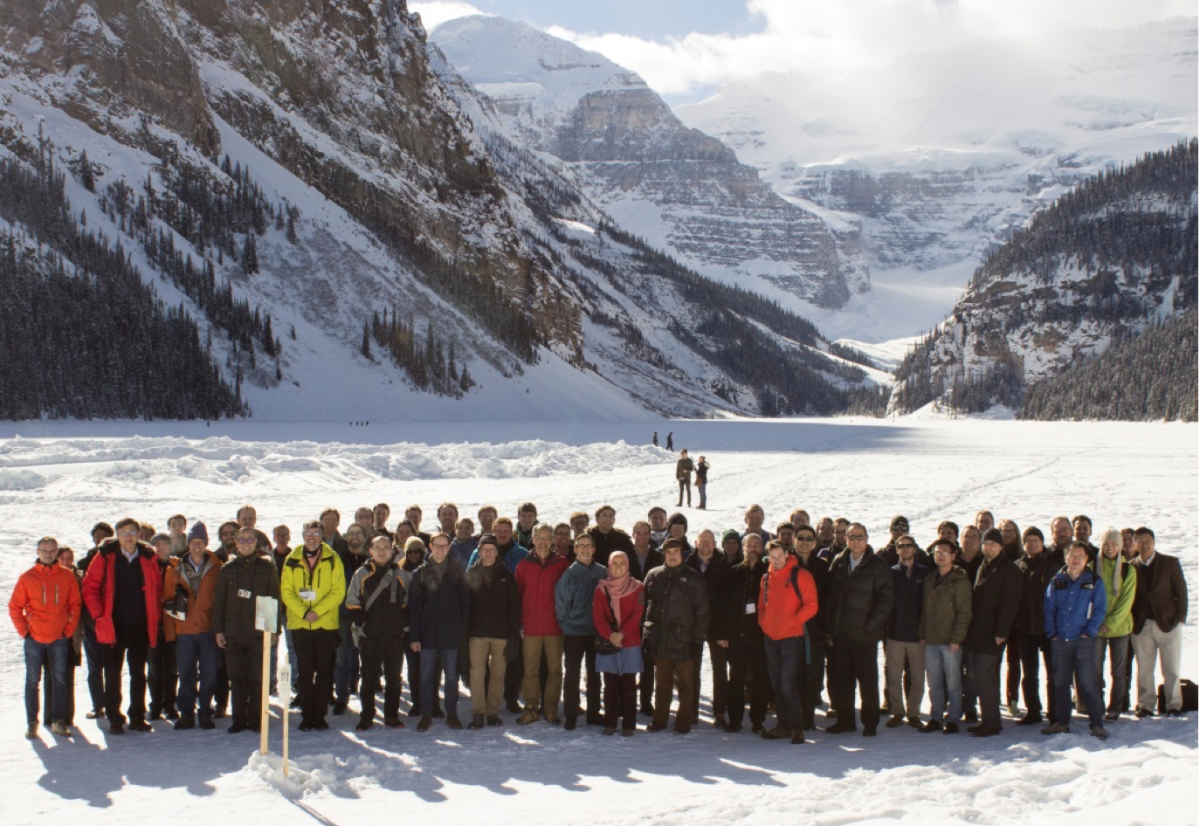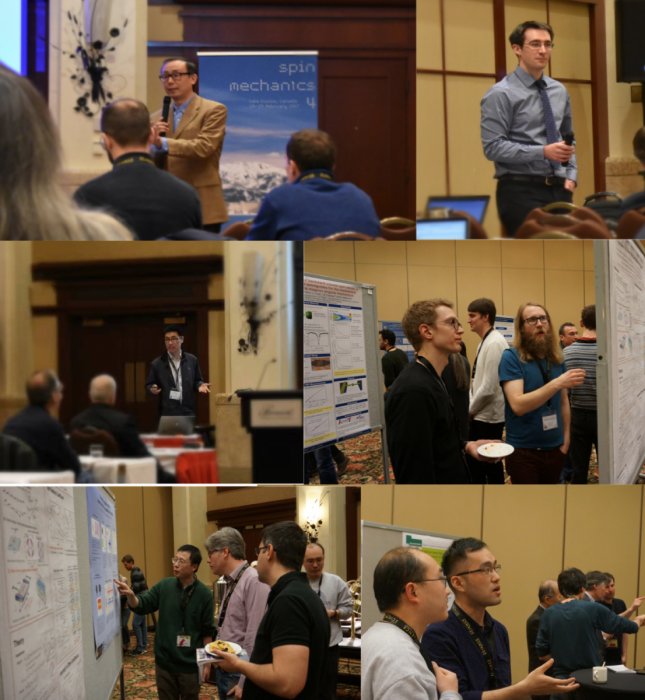
Group photo of participants at Spin Mechanics 4, co-organized by the University of Alberta and the University of Manitoba. February 20-25, 2017 Banff National Park, Alberta, Canada. Photo supplied by Can-Ming Hu.
The University of Manitoba interacts with world-renowned researchers
With societies technological demands ever increasing, scientists face a difficult challenge: How can we overcome the limitations of existing technologies, and continue to push the boundaries of technological innovation? One promising solution to this problem is the development of quantum and spintronic systems, which overcome the basic limitations of conventional electronics and will lead to faster, more energy efficient devices.
The research group of Prof. Can-Ming Hu, Department of Physics and Astronomy, at the University of Manitoba focuses on cavity spintronics and the ability to couple spin and photonic systems in order to develop novel spintronic technologies. In general, spin mechanics focuses on spin, an intrinsic properties of the electron, which is used to carry information in spin-based devices, such as high-density memory storage technologies. To develop novel spin-based sensors and logical devices, the exploration of spin coupling to photons and phonons is being explored by top laboratories around the world.
Therefore the cross pollination of ideas between these two communities will certainly serve to push both fields forward. It is with this motivation that the University of Manitoba and University of Alberta in partnership with Mark Freeman, a leader in cavity optomechanics, jointly organized the international workshop Spin Mechanics 4 (SM4). Held from February 20-25, 2017 in Banff National Park, Alberta, Canada. The conference hosted 94 participants from 64 universities and institutes.
Spin Mechanics brought together leading researchers from around the world including American Physical Society (APS) fellows, research chairs and distinguishing professors, working on all different perspectives of spin mechanics, thereby stimulating the international progress in spin mechanics.
The combination of oral presentations, poster presentations and discussions further clarified the key questions remaining in the field of spin mechanics and new research directions were outlined. These exciting talks represent only a fraction of the new results communicated at Spin Mechanics 4.

(L to R): Prof. Can-Ming Hu chairing an oral session. Prof. Jacob Burgess chairing an oral session. Dr. Lihui Bai delivering an invited talk. Mr. Michael Harder discussing with Dr. Vincent Sauer (University of Alberta). Dr. Yongsheng Gui discussing with Dr. Hans Huebl (Walther-Meissner-Institute). Dr. Bimu Yao discussing with Dr. Zhu Diao (Stockholm University)
Six UM researchers took part in SM4, actively interacting with other researchers from around the world by sharing the world-class research being performed at the University of Manitoba. Dr. Can-Ming Hu, professor in the Department of Physics and Astronomy, served as co-chair of the organizing committee.
Dr. Jacob Burgess, assistant professor in the Department of Physics and Astronomy chaired the Friday afternoon session on “Novel devices, switching” and also presented experimental results focused on measuring individual Fe4 single molecule magnets by scanning tunnelling microscopy. This work emphasizes the possibility of tuning magnetic properties in spintronics devices by mechanical interactions.
Dr. Lihui Bai gave an invited oral presentation on the non-local manipulation of spin current using a microwave cavity, which offers a new method for spin current manipulation, an important step technique for novel spintronic devices.
In Dr. Yongsheng Gui’s poster he demonstrated how to control a coupled photon-magnon system using microwave polarization, discussing the design and implementation of a novel 2D structure which may open up new avenues for materials characterization and microwave applications.
Dr. Bimu Yao presented a method to use voltage rather than external magnetic field to control the cavity photon-magnon coupling in an on-chip 2D planar cavity. This electrical control of cavity magnon polariton may open up avenues for designing advanced on-chip microwave devices that better utilize light-matter interactions.
Finally, PhD candidate Michael Harder presented his work which demonstrates the phase measurement of strongly coupled spin-photon systems. In particular he showed the phase behavior of long lived “dark mode” states which are attracting research interest due to their potential for quantum information processing.
Spin Mechanics 4 enabled intensive discussion on the key questions of spin-based coupling mechanisms and laid the path for the future development of the field. In fact, due to the rapid development of the field and the success of SM4, a new international conference series on Cavity Spintronics is being initialized and planned in Germany.
By hosting SM4, University of Manitoba demonstrated the world-class research done in Manitoba and interacted with the top researchers around the world, setting the stage for future discussions and collaborations. This conference has greatly enhanced the visibility and reputation of University of Manitoba to the international research community.






